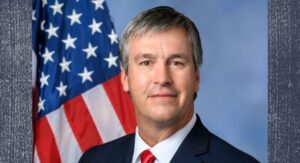World to learn fate of Iran nuclear pact Tuesday afternoon
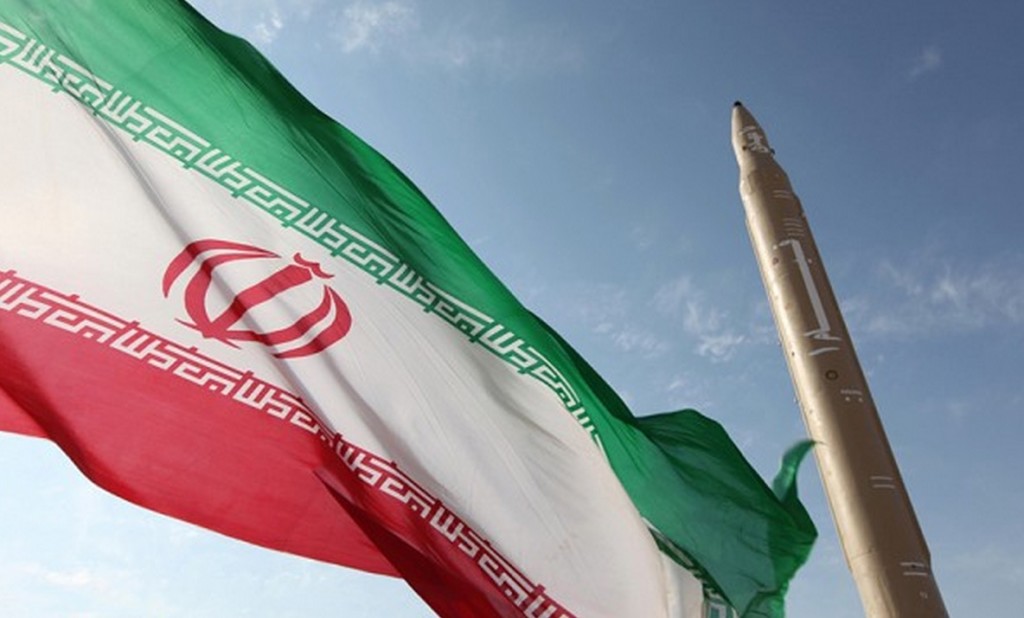
President Donald Trump is preparing to tell the world whether he plans to follow through on his threat to pull out of the landmark nuclear accord with Iran and almost surely ensure its collapse. There are no signs that European allies enlisted to “fix” the deal have persuaded him to preserve it. In a burst of last-minute diplomacy, punctuated by a visit by Britain’s top diplomat, the deal’s European members gave in to many of Trump’s demands, according to officials, diplomats and others briefed on the negotiations. Yet they still left convinced he is likely to re-impose sanctions and walk away from the deal he has lambasted since his days as a presidential candidate. Hanging in the balance Tuesday was the fate of the 2015 nuclear deal struck by the United States, Iran and world powers that lifted most U.S. and international sanctions against the country. In return, Iran agreed to restrictions on its nuclear program making it impossible to produce a bomb, along with rigorous inspections. If the deal collapses, Iran would be free to resume prohibited enrichment activities, while businesses and banks doing business with Iran would have to scramble to extricate themselves or run afoul of the U.S. As they braced for an expected withdrawal, U.S. officials were dusting off plans for how to sell a pullout to the public and explain its complex financial ramifications, said the officials and others, who weren’t authorized to speak ahead of an announcement and requested anonymity. Building up anticipation for the big reveal, Trump announced on Twitter he would disclose his decision at 2 p.m., with an announcement set for the Diplomatic Room of the White House. With uncharacteristic discipline, he kept the decision confined to a small group within the White House National Security Council, leaving even many of his aides guessing what he had decided. There was at least as much guessing in Iran, where many are deeply concerned about how Trump’s decision could affect the already struggling economy. In Tehran, President Hassan Rouhani sought to calm nerves, smiling as he appeared at a petroleum expo. He didn’t name Trump directly, but emphasized that Iran continued to seek “engagement with the world.” “It is possible that we will face some problems for two or three months, but we will pass through this,” Rouhani said. An immense web of sanctions, written agreements and staggered deadlines make up the accord. So Trump effectively has several pathways to pull the United States out of the deal by reneging on its commitments. Under the most likely scenario, Trump will allow sanctions on Iran’s central bank — intended to target its oil exports — to kick back in, rather than waiving them once again on Saturday, the next deadline for renewal, said the individuals briefed on Trump’s deliberations. Then the Trump administration would give those who are doing business with Iran a six-month grace period to wind down business and avoid beaching of those sanctions. Depending on how Trump sells it — either as an irreversible U.S. pullout, or one final chance to save it — the deal could ostensibly be strengthened during those six months in a last-ditch effort to persuade Trump to change his mind. The first 15 months of Trump’s presidency have been filled with many such “last chances” for the Iran deal in which he’s punted the decision for another few months, and then another. Other U.S. sanctions don’t require a decision until later, including those on specific Iranian businesses, sectors and individuals that will snap back into place in July unless Trump signs another waiver. A move on Tuesday to restore those penalties ahead of the deadline would be the most aggressive move Trump could take to close the door to staying in the deal. Even Trump’s secretary of state and the U.N. agency that monitors nuclear compliance agree that Iran, so far, has lived up to its side of the deal. But the deal’s critics, such as Israel, the Gulf Arab states and many Republicans, say it’s a giveaway to Tehran that ultimately paves the path to a nuclear-armed Iran several years in the future. Iran, for its part, has been coy in predicting its response to a Trump withdrawal. For weeks, Iran’s foreign minister had been saying that a re-imposition of U.S. sanctions would render the deal null and void, leaving Tehran little choice but to abandon it as well. But on Monday, Rouhani said Iran could stick with it if the European Union, whose economies do far more business with Iran than the U.S., offers guarantees that Iran would keep benefiting. It is far from clear that Europe can credibly provide that assurance. Even with the deal in place, Iran complained constantly that European banks and businesses were staying away out of fear they’d be punished by the United States. The global financial system is so interconnected and so dependent on New York that it’s nearly impossible to conduct business that doesn’t touch the U.S. financial system. That gives Trump incredible leverage if he threatens that anyone doing business with Iran will be cut off from the United States. For the Europeans, a Trump withdrawal would also constitute dispiriting proof that trying to appease the mercurial American president is an exercise for naught. The three EU members of the deal — Britain, France and Germany — were insistent from the start that the deal could not be re-opened. After all, it was the U.S. that brokered the agreement in 2015 and rallied the world behind it. But all that was under President Barack Obama, whose global legacy Trump has worked to chip away at since taking office. So the Europeans reluctantly backed down, only slightly at first, agreeing to discuss an “add-on” agreement that wouldn’t change the underlying nuclear deal, but would add new restrictions on Iran to address what Trump had identified as its shortcomings. Trump wanted to deter Iran’s ballistic missile program and other destabilizing actions in the region. He also wanted
Mike Pompeo: US stands ‘with Israel’ in fight against Iran
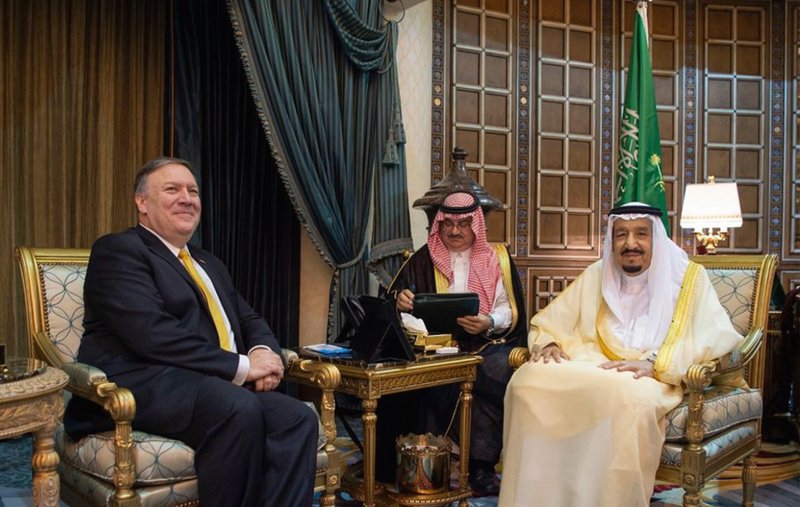
Secretary of State Mike Pompeo on Sunday gave a warm boost of support to Israel in its standoff against Iran, saying “the United States is with Israel in this fight.” Pompeo has been using the Middle East leg of his first trip abroad as America’s top diplomat to call for concerted international action to punish Iran for its missile programs. The tough line was welcomed in Israel, which considers Iran its greatest threat and has been leading calls for the international community to revise its 2015 nuclear deal with Iran. He arrived after visiting Saudi Arabia, another fierce rival of Iran. “We remain deeply concerned about Iran’s dangerous escalation of threats to Israel and the region and Iran’s ambition to dominate the Middle East remains,” Pompeo said after a nearly two-hour meeting with Israeli Prime Minister Benjamin Netanyahu. “The United States is with Israel in this fight.” Israel has called for tough international action against Iran, citing its hostile rhetoric, support for anti-Israel militant groups and development of long-range missiles. It also has complained the 2015 nuclear deal does not do enough to prevent Iran from developing a nuclear-weapons capability, and expressed growing concerns about Iran’s involvement in the civil war in neighboring Syria. It says it will not allow Iran to establish a permanent military presence in Syria, fearing the Iranians will launch attacks. President Donald Trump is to decide by May 12 whether to remain in the nuclear deal. Pompeo repeated the Trump position that “if we can’t fix it, he is going to withdraw.” Netanyahu welcomed the tough U.S. line. “Iran must be stopped, its quest for a nuclear bomb must be stopped, its aggression must be stopped and we’re committed to stopping it together,” he said. Netanyahu also welcomed the U.S. recognition of Jerusalem as Israel’s capital, and the scheduled move of its embassy from Tel Aviv on May 14. Pompeo said the U.S. is “incredibly proud” of the embassy move. The Palestinians, who claim Israeli-annexed east Jerusalem as their capital, have harshly criticized the U.S. move and all but cut off ties with the White House. Earlier in Saudi Arabia, Pompeo also took aim at Iran. “Iran destabilizes this entire region,” Pompeo said in brief remarks to journalists with Saudi Foreign Minister Adel al-Jubeir. He also urged the Saudis and their neighbors to resolve a festering dispute with Qatar that U.S. officials say Iran is exploiting to boost its influence in the region, including in Yemen and Syria. Pompeo on Sunday met with Saudi King Salman, whose country, along with Bahrain, Egypt and the United Arab Emirates, is embroiled in a row with Qatar that had hobbled Gulf Arab unity and frustrated the U.S. as it seeks to blunt growing Iranian assertiveness. “I think they would all agree that it’s in everyone’s best interests that the Gulf states all figure out how to be together,” Pompeo told reporters as he traveled to Israel. “We’ve got a common challenge in Iran I think they all recognize that. We’re hopeful that they will in their own way figure out their dispute between them.” The ex-CIA chief arrived in Riyadh a day earlier, shortly after Iranian-backed Houthi rebels in Yemen fired missiles at Saudi Arabia’s southern city of Jizan, killing one person and underscoring what U.S. officials said is a growing threat emanating from Iran. Senior U.S. officials traveling with Pompeo blamed Iran for smuggling the missiles into Yemen. They said the incident highlighted the importance of the Trump administration’s push to counter Iran in the region. Iran has also provided crucial support to Syrian President Bashar Assad. Al-Jubeir said the kingdom “supports the policy of the Trump administration against Iran and to improve the terms of the nuclear agreement with Iran.” Pompeo’s meetings in Saudi Arabia and Israel, to be followed by discussions in Jordan, come just weeks ahead of several key dates that could bring further volatility to the region. Trump has set a May 12 deadline to decide whether to pull out of the Iran nuclear deal, something he appears likely to do despite heavy pressure to stay in from European and other parties. In London, British Prime Minister Theresa May’s office said that she discussed the deal with her French and German counterparts. It said they agreed that the deal should remain intact, even while addressing shortcomings. The countries “agreed that there were important elements that the deal does not cover, but which we need to address — including ballistic missiles, what happens when the deal expires, and Iran’s destabilizing regional activity,” the statement said. On May 14 comes the U.S. Embassy move, marking a significant shift in decades of American policy toward Israel and the Palestinians. The next day the Palestinians will mark the anniversary of what they term the “catastrophe,” when hundreds of thousands of Palestinians fled or were driven from their homes during the 1948 war that surrounded Israel’s creation. Dozens of Palestinians have been killed by Israeli fire during recent protests along border between Israel and Gaza. Those protests, spearheaded by the Islamic militant Hamas movement, are expected to peak on May 15. Also looming over the trip is uncertainty over Trump’s policy on Syria, which has shifted between a speedy all-out withdrawal of American forces and leaving a lasting footprint to deter Iran from completing a land bridge from Tehran to Beirut. Pompeo also is taking a leading role in Trump’s preparations for an expected summit in May or early June with North Korean leader Kim Jong Un. Pompeo, while en route to Israel, was asked whether a U.S. withdrawal from the Iran nuclear deal would complicate negotiations “I don’t think Kim Jung Un is staring at the Iran deal and saying, ’Oh goodness, if they get out of that deal, I won’t talk to the Americans anymore. There are higher priorities, things he is more concerned about than whether the Americans stay” in the accord, Pompeo said. Republished with the permission of the Associated Press.
Travel ban case is justices’ first dive into Trump policy
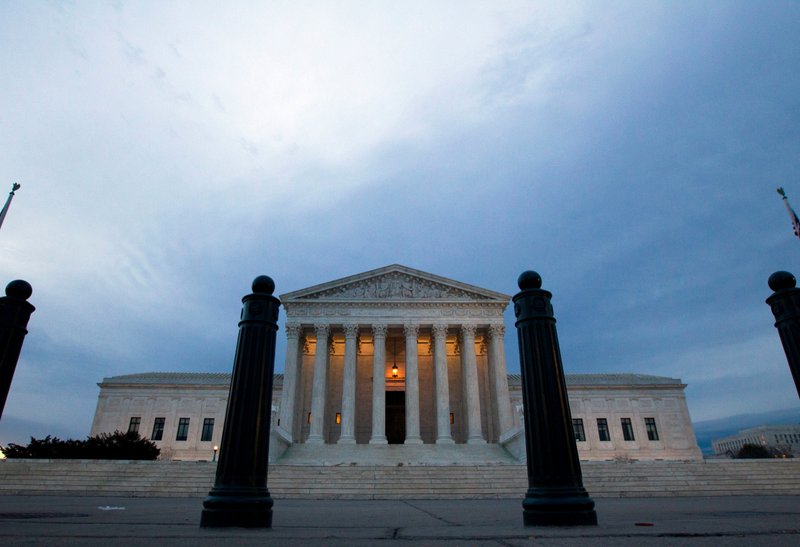
The Supreme Court has so far had little to say about Donald Trump’s time as president, even as the nation has moved from one Trump controversy to another. That’s about to change. The justices’ first deep dive into a Trump administration policy comes in a dispute over the third and latest version of the administration’s ban on travel from some countries with majority Muslim populations. Opponents of the policy and some lower courts have labeled it a “Muslim ban,” harking back to Trump’s campaign call to keep Muslims from entering the country. The high-stakes arguments at the high court on Wednesday could offer some indication about how a court that runs on respect for traditions and precedent will deal with a president who regularly breaks with convention. Apart from the campaign statements, Trump’s presidential tweets about the travel ban and last fall’s retweets of inflammatory videos that stoked anti-Islam sentiment all could feature in the court’s discussion of the travel ban’s legality. “The court could get to the right outcome without getting into the question of his tweets. But I think the president set it up so that it’s virtually impossible to ignore him when he’s shouting from the rooftops about what his purpose was in the three versions of the ban,” said Cecillia Wang, the American Civil Liberties Union’s deputy legal director. Solicitor General Noel Francisco, who will argue the administration’s case, said in a court filing that the ban is well within the president’s authority and is not based on prejudice against Islam. In a sign of heightened public interest, the court is taking the rare step of making an audio recording of the proceedings available just hours after the arguments end. One key issue will be how the court evaluates administration actions. Neil Eggleston, President Barack Obama’s last White House counsel, suggested in an online forum last week that Trump does not merit the same measure of latitude that courts usually give presidents, especially in the areas of national security and immigration. “The court will have to wrestle with how much to defer to a President who has created this record of chaos and animus,” Eggleston and co-author Amanda Elbogen wrote on justsecurity.org. Josh Blackman, a professor at the South Texas College of Law in Houston, cautioned that the court would be breaking new ground if it were to treat Trump differently from other presidents. The policy under review at the court applies to travelers from five countries with overwhelmingly Muslim populations — Iran, Libya, Somalia, Syria and Yemen. It also affects two non-Muslim countries: blocking travelers from North Korea and some Venezuelan government officials and their families. A sixth majority Muslim country, Chad, was removed from the list this month after improving “its identity-management and information sharing practices,” Trump said in a proclamation. Francisco said the Chad decision shows that the restrictions are premised only on national security concerns. He also said that the State Department has cleared more than 430 visa applicants from the affected countries for waivers that would allow them to enter the U.S. But the challengers argue that the administration cannot ask the court to ignore all that has happened. Trump’s first travel ban was issued just a week after he took office in January 2017, and was aimed at seven countries. It triggered chaos and protests across the U.S. as travelers were stopped from boarding international flights and detained at airports for hours. Trump tweaked the order after the 9th U.S. Circuit Court of Appeals in San Francisco refused to reinstate the ban. The next version, announced in March 2017, dropped Iraq from the list of covered countries and made it clear the 90-day ban covering Iran, Libya, Somalia, Sudan, Syria and Yemen didn’t apply to those travelers who already had visas. It also eliminated language that would give priority to religious minorities. Critics said the changes didn’t erase the ban’s legal problems. The 9th Circuit and the 4th U.S. Circuit Court of Appeals in Richmond, Virginia, agreed with the ban’s opponents. The 4th Circuit said the ban “drips with religious intolerance, animus and discrimination.” The 9th Circuit ruled that Trump violated immigration law. The third version is indefinite, unlike the other two, and the administration said it is the product of a thorough review of how other countries screen their own citizens and share information with the U.S. It fared no better than its predecessors in the lower courts, but the Supreme Court said in an unsigned order in December that it could take full effect while the legal dispute continues. The justices said nothing about the substance of the policy, either in December or in earlier actions involving the ban. Now, though, they are confronted with the administration’s view that Trump has broad discretion to impose limits on immigration and that the courts don’t even have a role to play. The Justice Department has said throughout the course of the legal fight that the lawsuits challenging the policy should be dismissed without ever reaching the challengers’ claims. The administration says that foreigners have no right to enter the United States and no right to challenge their exclusion in American courts. Supporting briefs for the ban’s challengers dwarf filings on the administration’s side. Retired high-ranking military officers, former Republican officeholders, Catholic bishops, Amazon, Facebook and 113 other companies, the children of Japanese-Americans who were held in internment camps during World War II and more than a dozen mainly Democratic-led states are among those calling on the court to strike down the Trump policy. The administration’s supporters include roughly the same number of Republican-led states, as well as conservative groups and Jay Sekulow, one of Trump’s personal lawyers. A decision in Trump v. Hawaii, 17-965, is expected by late June. Republished with the permission of the Associated Press.
Rex Tillerson’s dismissal may hasten demise of Iran nuclear deal
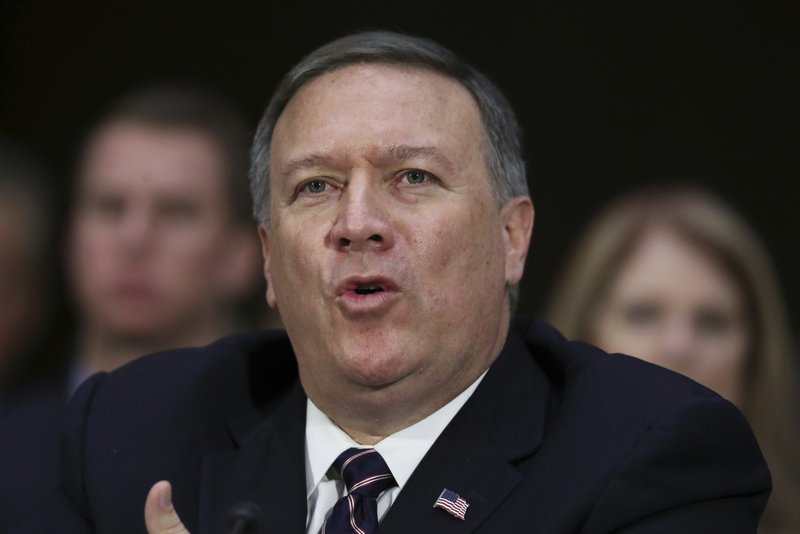
The Iran nuclear deal was in near terminal condition and on life support even before President Donald Trump fired Secretary of State Rex Tillerson. Tillerson’s dismissal this week may hasten its demise. As CIA chief and Iran hawk Mike Pompeo prepares to run the State Department, the Trump administration is weighing a speedier withdrawal from the agreement than even the president has threatened, according to two U.S. officials and two outside advisers briefed on the matter. They were not authorized to discuss the sensitive negotiations publicly and spoke on condition of anonymity. While such a scenario is unlikely, the fact it is being floated as an option may give U.S. officials more leverage in negotiations with European signatories to salvage the accord by toughening it. Two such negotiating sessions have already been held and a third is set for Thursday in Berlin. Trump, who calls the Obama administration’s signature foreign policy achievement the worst deal ever negotiated, has vowed to walk away from the 2015 agreement in mid-May unless Britain, Germany and France join the U.S. in addressing what the president says are its fatal flaws. These include no penalties for Iran’s missile work and support for militant groups in Lebanon, Syria, Yemen and elsewhere. The deal that was negotiated by the Obama administration and six other countries limits Iran’s enrichment and stockpiling of material that could be applied to a nuclear weapons program. In exchange, Tehran was granted widespread relief from international trade, oil and banking sanctions. Trump’s next deadline to extend some of those concessions is May 12, and he has vowed not to do so again unless the Europeans meet his demands. Any U.S. withdrawal would likely crater the agreement. If the U.S. begins threatening fines and other punishments for sanctions violations, countries around the world are likely to curtail commerce with Iran. That could prompt the Iranians to walk away as well, and perhaps even restart nuclear activities banned under the accord. An indication of the Trump administration’s thinking could come Friday, when the U.S., Britain, China, France, Germany, Russia, the European Union and Iran meet for a periodic review at the International Atomic Energy Agency headquarters in Vienna. State Department policy planning chief Brian Hook, who is running the negotiations with Europe, will lead the U.S. delegation to the larger meeting in Austria’s capital. Hook, who Tillerson leaned on heavily for policy advice and direction, could meet separately in Vienna with the Iranian delegation head, Deputy Foreign Minister Abbas Aragchi. For his part, Aragchi sees the writing on the wall. He told a parliamentary committee in Tehran on Wednesday that Tillerson’s ouster was proof that Trump would pull out and promised that Iran would withdraw if the U.S. does. In the U.S., Iran deal supporters braced for what they see as the inevitable. Pompeo “is certain to advise the president to withdraw the United States from our obligations under the nuclear agreement,” said Diplomacy Works, a group of mainly former Obama administration officials that lobbies for staying in the deal. Hook had been tasked by Tillerson with getting the Europeans to agree to as many of Trump’s demands as possible, with an eye toward selling the president on extending the sanctions waivers. Doing so would buy U.S. negotiators time to deal with elements of the agreement Trump has disparaged — such as its expiration dates on key nuclear constraints — and missile and terrorism concerns. With Tillerson gone, the emphasis will likely change. The ex-oilman had waged an often lonely battle within Trump’s Cabinet to save the deal. He succeeded for 13 months. But each time Trump faced another sanctions deadline, Tillerson met increased resistance to keeping the agreement alive. In firing Tillerson on Tuesday, Trump in particular noted his disagreement over the Iran accord. Trump won’t have that problem with Pompeo, who has lambasted the deal on a level similar to Trump, making clear the two men are of the same opinion. Trump said that he and Pompeo “have a very similar thought process” on the deal. As a congressman, Pompeo vociferously denounced the accord when it was struck. “The (deal) can perhaps delay Iran’s nuclear weapons program for a few years,” he wrote at the time. “Conversely, it has virtually guaranteed that Iran will have the freedom to build an arsenal of nuclear weapons at the end of the commitment.” His stance and position with Trump could give Pompeo leverage with the Europeans that Tillerson never enjoyed. U.S. officials said American positions have hardened over the past several weeks, notably on Iranian ballistic missile testing and the deal’s provisions that allow Iran to gradually resume advanced atomic work. Because Iran and the Europeans refuse to renegotiate the nuclear deal, U.S. officials are seeking to create a supplemental agreement with Europe to address these matters. At Thursday’s meeting in Berlin, U.S. and the European officials are hoping to compare draft written proposals and combine points of agreement into a new document that could form the basis of a side deal. U.S. and European diplomats say they’re closer on long-range ballistic missile launches, inspections and new sanctions on Iranian-backed militant groups. Gaps are larger on medium-range missiles that could hit Israel, Saudi Arabia and other Gulf Arab states and on the deal’s particulars for when advanced atomic work can restart. The U.S. focus turned to medium-range missiles after Israeli Prime Minister Benjamin Netanyahu met Trump in Washington earlier this month. Iran maintains that it must have medium-range missiles to defend itself, an argument the Europeans have been sympathetic to. The differences are even more stark on the sunset provisions, which are codified in the nuclear deal and which the Europeans and Iran regard as inviolable, according to the diplomats. One senior negotiator involved in the talks said last week that Europe is prepared to be “creative” in addressing the provisions but would not budge from opposing any measure that would punish Iran for activity that is otherwise permitted under the 2015 agreement. Republished with
Supreme Court permits full enforcement of Donald Trump travel ban
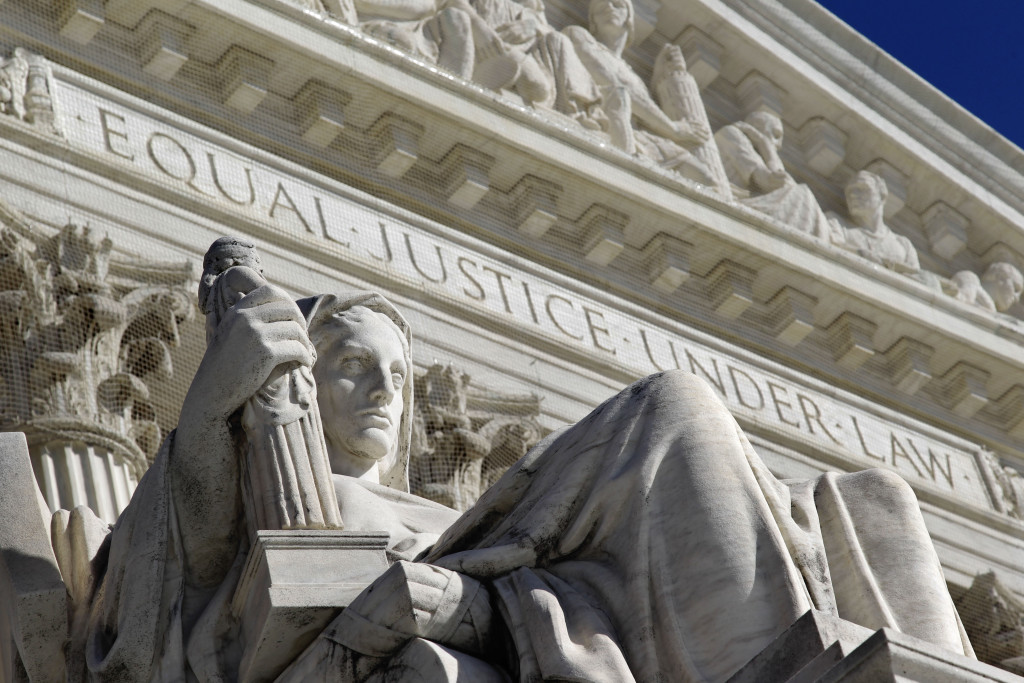
The US Supreme Court on Monday issued an order permitting full enforcement of President Donald Trump’s revised travel ban to go into effect while legal challenges continue to be argued in lower courts. While not a final ruling, the court is allowing the Trump administration enforce a ban on travel to the U.S. by residents of six mostly Muslim countries — Syria, Chad, Iran, Libya, Somalia and Yemen. The only dissent from the court came from Justices Ruth Bader Ginsburg and Sonia Sotomayor who would have left the lower court order in place had they not had the minority opinion on the court. White House Deputy Press Secretary Hogan Gidley responded to the court’s decision and called the ban “lawful and essential to protecting our homeland.” “We look forward to presenting a fuller defense of the proclamation as the pending cases work their way through the courts,” Gidley added. What happens next? Federal appeals courts in San Francisco, California, and Richmond, Virginia, will hear arguments this week on whether the Trump’s third executive order of the travel ban policy is lawful. The Supreme Court noted it expects those lower courts to reach decisions “with appropriate dispatch.” Meaning the case will eventually end up back in the Supreme Court, likely by the end of June.
Donald Trump replaces 90-day ban with new travel restrictions
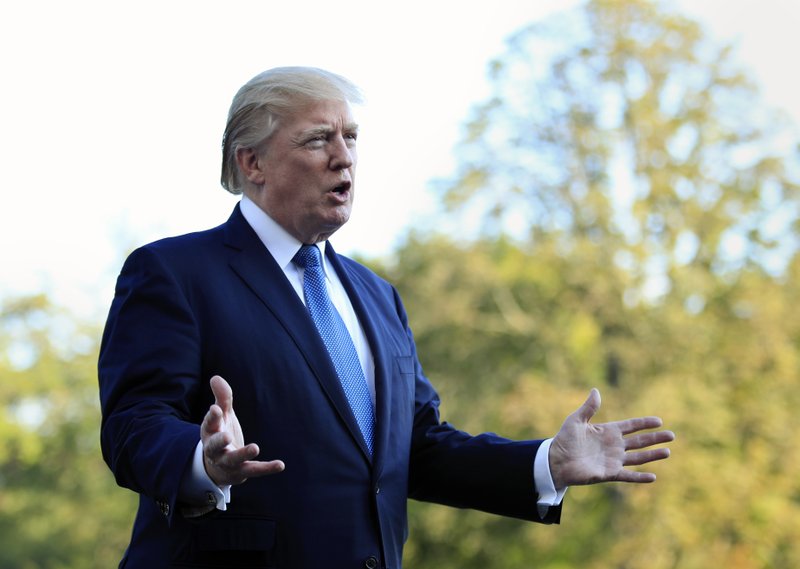
President Donald Trump has signed a proclamation imposing strict new restrictions on travelers from a handful of countries, including five that were covered by his expiring travel ban. Administration officials say the new measures are required to keep the nation safe. The indefinite restrictions apply to citizens of Chad, Iran, Libya, Somalia, Syria, Yemen and North Korea. As part of the presidential proclamation signed Sunday, the U.S. will also bar the entry of certain Venezuelan government officials and their immediate families. The changes will take effect October 18. The announcement came the same day that Trump’s temporary ban on visitors from six Muslim-majority countries was set to expire, 90 days after it went into effect. That ban had barred citizens of Iran, Libya, Somalia, Sudan, Syria and Yemen who lacked a “credible claim of a bona fide relationship with a person or entity in the United States” from entering the U.S. Only one of those countries, Sudan, will no longer be subject to travel restrictions. “Making America Safe is my number one priority. We will not admit those into our country we cannot safely vet,” Trump tweeted late Sunday after the new policy was announced. Unlike the first iteration of Trump’s travel ban, which sparked chaos at airports across the country and a flurry of legal challenges after being hastily written with little input outside the White House, officials stressed they had been working for months on the new rules, in collaboration with various agencies and in conversation with foreign governments. To limit confusion, valid visas would not be revoked as a result of the proclamation. The order also permits, but does not guarantee, case-by-case waivers for citizens of the affected countries. The restrictions are targeted at countries that the Department of Homeland Security says fail to share sufficient information with the U.S. or haven’t taken necessary security precautions. DHS has spent recent months working to develop a new security baseline, which includes factors such as whether countries issue electronic passports with biometric information, report lost or stolen passports to INTERPOL, an international law enforcement body, and share information about travelers’ terror-related and criminal histories. Citizens of countries that don’t meet the standard will face restrictions until they make changes to bring them into compliance. The new rules include the suspension of all immigrant visas for nationals of Chad, Iran, Libya, North Korea, Syria, Yemen and Somalia, and the suspension of non-immigrant visas, such as for business and tourism, to nationals of Chad, Libya, North Korea, Syria and Yemen. Citizens of Iran will not be eligible for tourism and business visas, but remain eligible for student and cultural exchange visas if they undergo additional scrutiny. Such additional scrutiny will also be required for Somali citizens applying for all non-immigrant visas. Critics have accused Trump of overstepping his legal authority and violating the U.S. Constitution’s protections against religious bias each time he has ordered new travel restrictions. And the inclusion of Venezuela and North Korea appeared to be an attempt to block challenges from advocacy groups and others who have called the restrictions a ban on Muslims. Trump during his campaign called for a “total and complete shutdown of Muslims entering the United States.” The U.S. had already imposed wide-ranging sanctions on certain high-ranking Venezuelan government officials to protest the government’s attempts to consolidate power. “The fact that Trump has added North Korea — with few visitors to the U.S. — and a few government officials from Venezuela doesn’t obfuscate the real fact that the administration’s order is still a Muslim ban,” said Anthony D. Romero, executive director of the American Civil Liberties Union, which has been challenging the ban in court. “President Trump’s original sin of targeting Muslims cannot be cured by throwing other countries onto his enemies list.” But administration officials argue the measure is necessary to keep Americans safe. Republished with permission from the Associated Press.
Alabama joins 15-state coalition in amicus brief supporting Donald Trump’s travel ban

A team of state attorneys general submitted an amicus brief to the U.S. Supreme Court on Thursday in support of the Trump administration’s efforts to restrict travel to the United States by providing a 90-day delay of travelers entering America from Iran, Libya, Somalia, Sudan, Syria and Yemen due to national security concerns regarding those countries. Alabama Attorney General Steve Marshall joined 15 other states in the brief the Court to uphold the travel ban to protect American citizens from terrorism. “The President is rightfully exercising his legal authority to restrict the entry of those who may endanger the safety and security of Americans,” said Marshall. “The restricted countries have a strong record of violent acts and terrorism, and it is vital and appropriate that the President’s provisions stand to properly vet travelers from these areas for the protection of our citizens.” The brief relates to an executive order Trump signed March 6, a revision to an earlier travel ban he signed January 27, a week into his presidency. Federal judges subsequently prevented both versions from being fully implemented, dealing a major legal setback to the new administration’s immigration policy. The Trump administration appealed the injunctions to the Supreme Court, which allowed a limited version of the ban to take effect and will hear full arguments in October. Thursday’s amicus brief was filed by the State of Texas and joined by Alabama, Arizona, Arkansas, Florida, Kansas, Louisiana, Missouri, North Dakota, Ohio, Oklahoma, South Carolina, South Dakota, Tennessee, and West Virginia, along with Gov. Phil Bryant of Mississippi.
White House criticizes Russia sanctions stalled in House
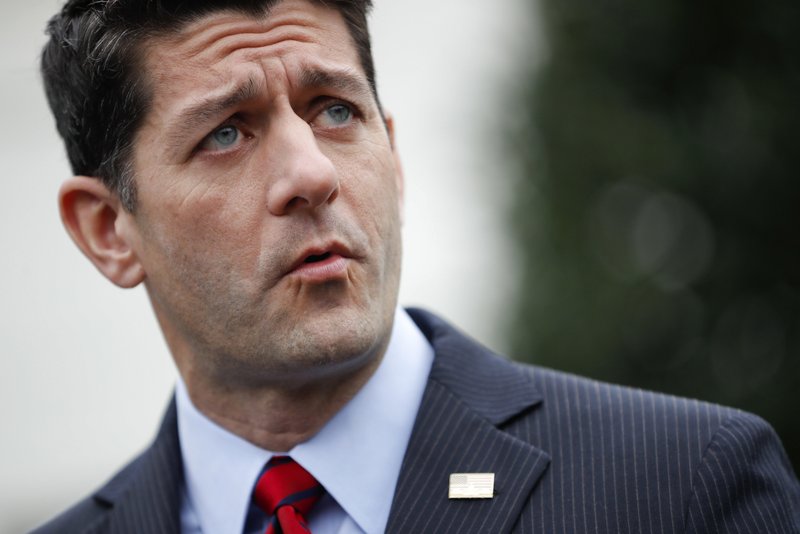
A new package of economic sanctions on Russia and Iran unacceptably constrains the president’s authority, the White House says, as Democrats complain that the Trump administration is trying to weaken the penalties. The legislation sailed through the Senate nearly a month ago in response to Russia’s meddling in the 2016 presidential election and its belligerence toward Ukraine. But the bill stalled in the House with Democrats and Republicans blaming each other for the delay. Marc Short, the White House legislative director, told reporters that the administration backs the new sanctions on Russia and Iran. But he appeared to object to a key part of the legislation that would give Capitol Hill a much stronger hand in determining Russia sanctions policy. The bill would require a congressional review if President Donald Trump attempted to ease or end penalties against Moscow. “Our concern is that the legislation, we believe, sets an unusual precedent of delegating foreign policy to 535 members of Congress by not including certain national security waivers that have always been consistently part of sanctions bills in the past,” Short said. Following his lengthy meeting on Friday with Russian President Vladimir Putin in Germany, Trump said he wants to move forward “working constructively with Russia” Officials from the Treasury and State departments met last week with House congressional staff to voice their concerns over the congressional review section of the bill. The officials said the provision would infringe on the president’s executive authority, according to an aide knowledgeable of the discussions. But weakening that provision substantially could provoke resistance from Republicans and Democrats. Sen. Bob Corker of Tennessee, the Republican chairman of the Foreign Relations Committee, heralded the review requirement as the proper exercise of congressional authority. Corker told reporters Monday that it’s not unusual for a White House to resist oversight of foreign policy. But he said the sanctions review requirement is a “very important” part of the legislation. “Any administration would prefer to conduct foreign policy 100 percent without involvement from Congress,” Corker said. But no Trump administration official has contacted him to say “we don’t want this legislation to pass. That has never occurred,” he said. Trump tweeted Sunday that sanctions against Russia were not discussed at his meeting with Putin. But White House spokeswoman Sarah Huckabee Sanders contradicted Trump, telling reporters Monday that “sanctions specific to election-meddling were discussed” in the meeting. Ashley Etienne, a spokeswoman for House Minority Leader Nancy Pelosi, said that Democrats have been demanding for weeks, to no avail, that the House Republican leadership bring the sanctions bill to the floor for a vote. “While Putin and President Trump meet privately, the American people are left to ask why Republicans are more concerned with Russia’s interests than the integrity of our democracy,” she said. A key sticking point for Democrats is a proposed technical change to the bill made late last month by the Senate that Democratic aides said Monday would prevent rank-and-file House members from being able to challenge a president’s decision to lift or ease the sanctions against Russia. But AshLee Strong, a spokeswoman for House Speaker Paul Ryan, blamed House Democrats for holding up the bill unnecessarily. She said House Republicans are fully prepared to coordinate with the Senate and move the bill forward, “but House Democrats are blocking that and demanding their own changes to the bill.” Separately, a Republican aide said House leaders were confident the sanctions package would be approved before Congress leaves for the August recess. The Republican and Democratic aides were not authorized to speak publicly and requested anonymity to discuss private talks. While Congress was on its weeklong July 4 recess, a new wrinkle developed that could make approval of the legislation more difficult. The national trade association representing oil and gas companies said the bill could harm U.S. energy companies while strengthening the hand of Russian businesses. The American Petroleum Institute said late last week that the bill would expand a prohibition on U.S. energy companies from being involved in oil projects located in Russia to projects around the world that include Russian energy firms. In trying to punish Moscow, the group said, the bill could instead penalize major American business, potentially costing billions of dollars in jobs and economic activity. Secretary of State Rex Tillerson, the former CEO of Exxon Mobil, has declined to endorse the sanctions legislation. He said during congressional testimony that Trump needs to have “the flexibility to adjust sanctions to meet the needs of what is always an evolving diplomatic situation” with Russia. The legislation cleared the Senate two weeks ago with 98 votes, an overwhelming margin that suggested the bill would speed quickly through the House and to Trump’s desk. But progress on the measure slowed almost immediately. House Republican leaders said the bill ran afoul of a constitutional requirement that legislation involving revenue start in the House. The necessary repairs were made, according to Corker, and approved by the Senate in late June. Republished with permission of The Associated Press.
Supreme Court ruling in travel ban case leaves many questions

The Supreme Court’s decision to partially reinstate President Donald Trump‘s temporary travel ban has left the effort to keep some foreigners out of the United States in a murky middle ground, with unanswered questions and possibly more litigation ahead. The justices ruled Monday in an unsigned opinion they would hold a full hearing on the case in October. In the meantime, the administration can bar travelers from six majority-Muslim countries from the U.S. if they don’t have a “credible claim of a bona fide relationship” with someone or some entity in the country. It’s unclear what will ultimately constitute a “bona fide relationship,” though the ruling suggested that an American job, school enrollment or a close relative could meet that threshold. Equally unclear is how many foreigners will be affected from the six countries: Syria, Sudan, Iran, Yemen, Libya and Somalia. The ruling was seen as at least a partial victory for Trump in the biggest court case of his presidency. Trump claims the temporary ban is needed to prevent terrorist attacks. Opponents reject that and argue it’s a backdoor way to bar Muslims from entering the United States, as Trump promised in his campaign. The early indications are that the administration will use the decision to take a tough line on travelers from those countries. A senior U.S. official familiar with the situation said the Trump administration has plans in place to relaunch the stalled ban and tourists will be among those kept out. Under these plans, largely orchestrated by White House adviser Stephen Miller, tourists from those countries and any academics, lecturers or others invited to speak or make presentations in the U.S. will be barred. Those groups are regarded as unable to show a substantial and pre-existing tie to a person or institution in the United States. The official who described the plans was not authorized to discuss them publicly by name and spoke on condition of anonymity. But some immigration lawyers and advocates said relatively few people would fall under the ban because these travelers tend to have sufficient relationships with people or institutions in the United States. Jamal Abdi, policy director for the National Iranian American Council, said most Iranians who visit the United States have relatives here or are coming to work or study. He said his group has no idea how the administration plans to judge family relationships and a hard line could mean a significant number of Iranians will be kept out the country for the time being. It could also mean more lawsuits if advocates for immigrants believe the administration is going beyond the Supreme Court’s guidelines in barring visitors to the United States. Like the fate of would-be tourists and scholars, the immediate future for refugees is murky. In its opinion, the court partially reinstated Trump’s temporary prohibition on refugees from any country, using criteria similar to that used in the travel ban. The effect on refugees could be greater because they are less likely to have family, school or business relationships in the United States. Lavinia Limon, CEO of the U.S. Committee for Refugees and Immigrants, said she was dismayed by the ruling, but insisted that her agency has “an existing relationship with incoming refugees, certified and arranged through the Department of State.” “Travel plans are in process, beds have been made and staff around the country plan to meet new Americans at the airports today, tomorrow and in the coming weeks and months,” Limon said. Trump’s initial travel ban caused panic and chaos at airports around the world in late January as it took effect immediately after being signed. Refugees, legal U.S. residents and visa holders were turned back at airports or barred from boarding U.S.-bound planes. A federal court blocked it about a week later. There may be less confusion as the ban is partially reinstated. The administration has revised its travel ban to exclude legal residents and visa holders. Also, the government said last week the ban would go into effect 72 hours after the Supreme Court ruling – which would be Thursday morning in Washington. Republished with permission of The Associated Press.
Donald Trump travel ban partly reinstated; fall court arguments set
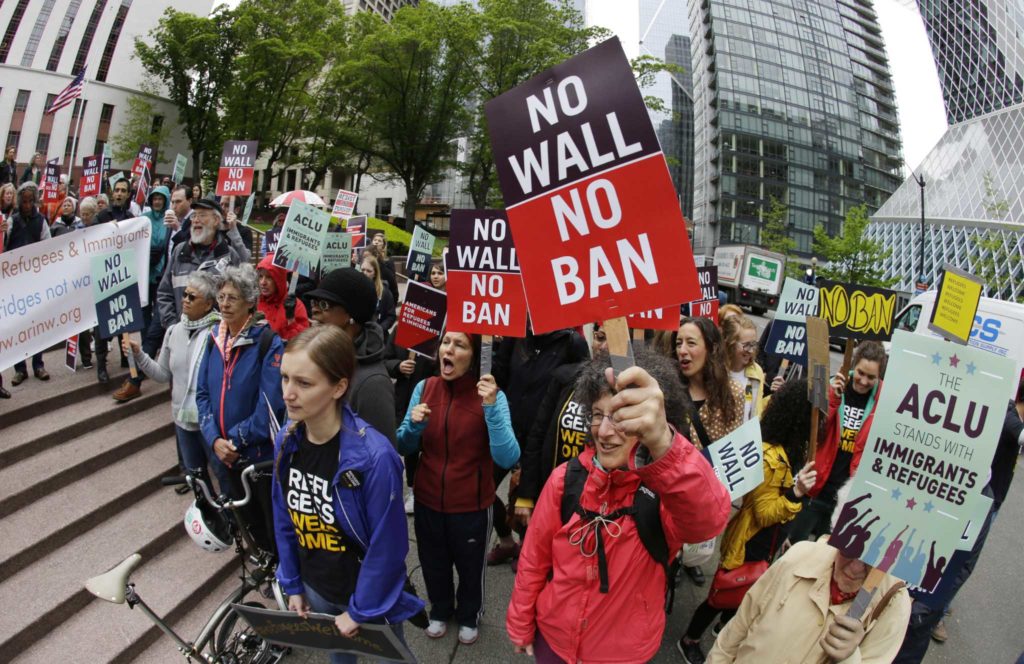
The Supreme Court is letting a limited version of President Donald Trump’s ban on travel from six mostly Muslim countries take effect, a victory for Trump in the biggest legal controversy of his young presidency. The justices will hear full arguments in October in the case that has stirred heated emotions across the nation. In the meantime, the court said Monday that Trump’s ban on visitors from Iran, Libya, Somalia, Sudan, Syria and Yemen can be enforced if those visitors lack a “credible claim of a bona fide relationship with a person or entity in the United States.” Trump said last week that the ban would take effect 72 hours after being cleared by courts. The administration has said the 90-day ban was needed on national security grounds to allow an internal review of screening procedures for visa applicants from the six countries. Opponents say the ban is unlawful, based on visitors’ Muslim religion. The administration review should be complete before Oct. 2, the first day the justices could hear arguments in their new term. A 120-ban on refugees also is being allowed to take effect on a limited basis. Three of the court’s conservative justices said they would have let the complete bans take effect. Justice Clarence Thomas, joined by Samuel Alito and Neil Gorsuch, said the government has shown it is likely to succeed on the merits of the case, and that it will suffer irreparable harm with any interference. Thomas said the government’s interest in preserving national security outweighs any hardship to people denied entry into the country. Some immigration lawyers said the limited nature of the ban and the silence of the court’s liberals on the issue Monday suggested that the court had not handed Trump much of a victory. The White House did not immediately comment. The court’s opinion explained the kinds of relationships people from the six countries must demonstrate to obtain a U.S. visa. “For individuals, a close familial relationship is required,” the court said. For people who want to come to the United States to work or study, “the relationship must be formal, documented and formed in the ordinary course, not for the purpose of evading” the travel ban. The opinion faulted the two federal appeals courts that had blocked the travel policy for going too far to limit Trump’s authority over immigration. The president announced the travel ban a week after he took office in January and revised it in March after setbacks in court. The 4th U.S. Circuit Court of Appeals in Richmond, Virginia, said the ban was “rooted in religious animus” toward Muslims and pointed to Trump’s campaign promise to impose a ban on Muslims entering the country as well as tweets and remarks he has made since becoming president. The San Francisco-based 9th U.S. Circuit Court of Appeals said the travel policy does not comply with federal immigration law, including a prohibition on nationality-based discrimination. That court also put a hold on separate aspects of the policy that would keep all refugees out of the United States for 120 days and cut by more than half, from 110,000 to 50,000, the cap on refugees in the current government spending year that ends September 30. Trump’s first executive order on travel applied to travelers from Iraq and well as the six countries, and took effect immediately, causing chaos and panic at airports over the last weekend in January as the Homeland Security Department scrambled to figure out whom the order covered and how it was to be implemented. A federal judge blocked it eight days later, an order that was upheld by a 9th circuit panel. Rather than pursue an appeal, the administration said it would revise the policy. In March, Trump issued the narrower order. Republished with permission of The Associated Press.
Court likely to question if Donald Trump’s travel ban discriminates

For the second time in a week, government lawyers will try to persuade a federal appeals court to reinstate President Donald Trump‘s revised travel ban – and once again, they can expect plenty of questions Monday about whether it was designed to discriminate against Muslims. A three-judge panel of the 9th U.S. Circuit Court of Appeals has scheduled arguments in Seattle over Hawaii’s lawsuit challenging the travel ban, which would suspend the nation’s refugee program and temporarily bar new visas for citizens of Iran, Libya, Somalia, Sudan, Syria and Yemen. Last week, judges on the 4th Circuit Court of Appeals heard arguments over whether to affirm a Maryland judge’s decision putting the ban on ice. They peppered Acting Solicitor General Jeffrey Wall with questions about whether they could consider Trump’s campaign statements calling for a ban on Muslims entering the U.S., with one judge asking if there was anything other than “willful blindness” that would prevent them from doing so. Monday’s arguments mark the second time Trump’s efforts to restrict immigration from certain Muslim-majority nations have reached the San Francisco-based 9th Circuit. After Trump issued his initial travel ban on a Friday in late January, bringing chaos and protests to airports around the country, a Seattle judge blocked its enforcement nationwide – a decision that was unanimously upheld by a three-judge 9th Circuit panel. The president then rewrote his executive order, rather than appeal to the U.S. Supreme Court, and in March, U.S. District Judge Derrick Watson in Honolulu blocked the new version from taking effect, citing what he called “significant and unrebutted evidence of religious animus” in Trump’s campaign statements. “Again, in this court, the President claims a nearly limitless power to make immigration policy that is all but immune from judicial review,” Hawaii Attorney General Douglas Chin wrote to the 9th Circuit. “Again, he must be checked.” The administration’s lawyers are seeking to persuade the judges that the lower court’s decision is “fundamentally wrong,” and that the president’s order falls squarely within his duty to secure the nation’s borders. The order as written is silent on religion, and neither Hawaii nor its co-plaintiff, the imam of the Muslim Association of Hawaii, has standing to sue, they say – arguments that were rejected in the lower court. The travel ban cases are expected to reach the Supreme Court, but that would likely be cemented if the 4th and 9th Circuits reach differing conclusions about its legality. Because of how the courts chose to proceed, a full slate of 13 judges heard the 4th Circuit arguments last week, while just three, all appointees of President Bill Clinton, will sit in Seattle. For that reason – with the possibility for myriad concurring or dissenting opinions – it could take the 4th Circuit longer to rule, noted Carl Tobias, a law professor at University of Richmond law school in Virginia. Republished with permission of The Associated Press.
Once critical of global deals, Donald Trump slow to pull out of any
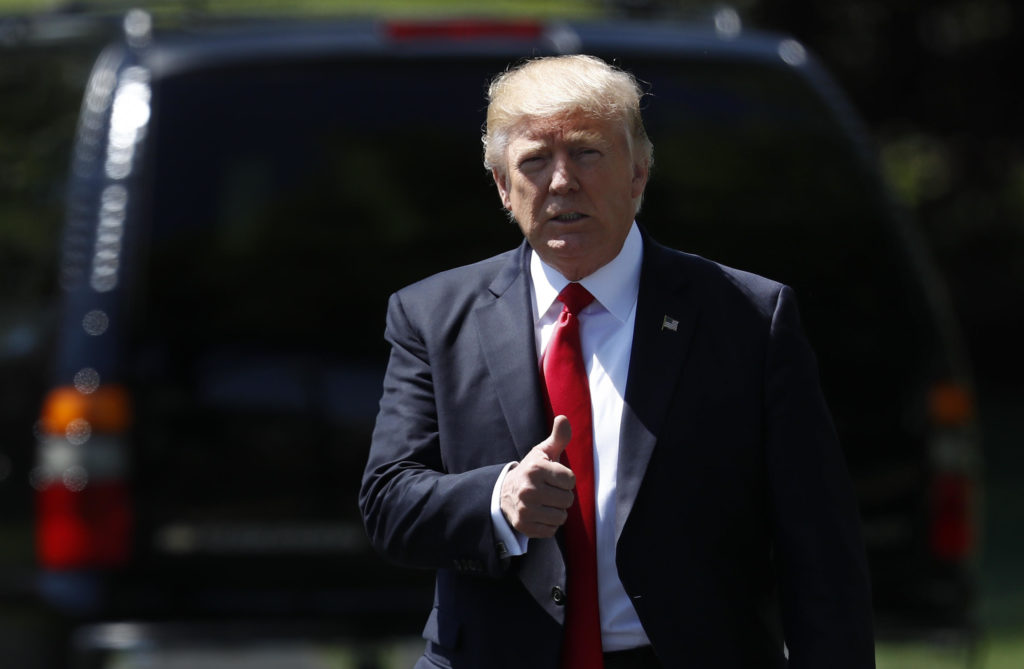
The “America First” president who vowed to extricate America from onerous overseas commitments appears to be warming up to the view that when it comes to global agreements, a deal’s a deal. From NAFTA to the Iran nuclear agreement to the Paris climate accord, President Donald Trump‘s campaign rhetoric is colliding with the reality of governing. Despite repeated pledges to rip up, renegotiate or otherwise alter them, the U.S. has yet to withdraw from any of these economic, environmental or national security deals, as Trump’s past criticism turns to tacit embrace of several key elements of U.S. foreign policy. The administration says it is reviewing these accords and could still pull out of them. A day after certifying Iran’s compliance with the nuclear deal, Secretary of State Rex Tillerson attacked the accord and listed examples of Iran’s bad behavior. His tone suggested that even if Iran is fulfilling the letter of its nuclear commitments, the deal remains on unsure footing. Yet with one exception — an Asia-Pacific trade deal that already had stalled in Congress — Trump’s administration quietly has laid the groundwork to honor the international architecture of deals it has inherited. It’s a sharp shift from the days when Trump was declaring the end of a global-minded America that negotiates away its interests and subsidizes foreigners’ security and prosperity. Trump had called the Iran deal the “worst” ever, and claimed climate change was a hoax. But in place of action, the Trump administration is only reviewing these agreements, as it is doing with much of American foreign policy. Douglas Brinkley, a presidential historian at Rice University, said Trump may be allowing himself to argue in the future that existing deals can be improved without being totally discarded. “That allows him to tell his base that he’s getting a better deal than Bush or Obama got, and yet reassure these institutions that it’s really all being done with a nod and a wink, that Trump doesn’t mean what he says,” Brinkley said. So far, there’s been no major revolt from Trump supporters, despite their expectation he would be an agent of disruption. This week’s reaffirmations of the status quo came via Tillerson’s certification of Iran upholding its nuclear deal obligations and the administration delaying a decision on whether to withdraw from the Paris climate accord. The president had previously spoken about dismantling or withdrawing from both agreements as part of his vision, explained in his inaugural address, that “every decision on trade, on taxes, on immigration, on foreign affairs will be made to benefit American workers and American families.” The Iran certification, made 90 minutes before a midnight Tuesday deadline, means Tehran will continue to enjoy relief from U.S. nuclear sanctions. Among the anti-deal crowd Trump wooed in his presidential bid, the administration’s decision is fueling concerns that Trump may let the 2015 accord stand. Tillerson on Wednesday sought to head off any criticism that the administration was being easy on Iran, describing a broad administration review of Iran policy that includes the nuclear deal and examines if sanctions relief serves U.S. interests. The seven-nation nuclear deal, he said, “fails to achieve the objective of a non-nuclear Iran” and “only delays their goal of becoming a nuclear state.” On the climate agreement, the White House postponed a meeting Tuesday where top aides were to have hashed out differences on what to do about the non-binding international deal forged in Paris in December 2015. The agreement allowed rich and poor countries to set their own goals to reduce carbon dioxide and went into effect last November, after the U.S., China and other countries ratified it. Not all of Trump’s advisers share his skeptical views on climate change — or the Paris pact. Trump’s position on trade deals also has evolved. He had promised to jettison the North American Free Trade Agreement with Mexico and Canada unless he could substantially renegotiate it in America’s favor, blaming NAFTA for devastating the U.S. manufacturing industry by incentivizing the use of cheap labor in Mexico. Now his administration is only focused on marginal changes that would preserve much of the existing agreement, according to draft guidelines that Trump’s trade envoy sent to Congress. The proposal included a controversial provision that lets companies challenge national trade laws through private tribunals. Trump has followed through with a pledge to pull the U.S. out of the Trans-Pacific Partnership, a sweeping free trade deal President Barack Obama negotiated. The agreement was effectively dead before Trump took office after Congress refused to ratify it. Even Trump’s Democratic opponent in the presidential race, Hillary Clinton, opposed the accord. But on NATO, Trump has completely backed off his assertions that the treaty organization is “obsolete.” His Cabinet members have fanned out to foreign capitals to show America’s support for the alliance and his administration now describes the 28-nation body as a pillar of Western security. Republished with permission of The Associated Press.


